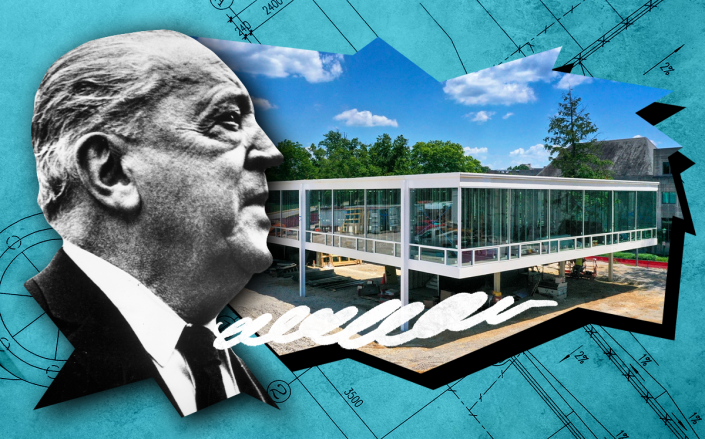The Rise of Minimalism in Design
Ludwig Mies van der Rohe was the first designer to embrace the concept of minimalism; he pioneered modernism.
December 23, 2022
Hundreds of years ago, the world of design was very different from the typical buildings we see today. If you have ever visited Europe, you probably remember the intricate details on the cathedrals and the vastly different carvings on marble structures. Compare that to one of those blocky gray buildings from the twenty-first century, and you can see a stark contrast in style. This is obviously true as humans have evolved as beings, and we have invented new technology that can make building new structures a lot easier. In turn, we have invented a new style known as minimalism, which is known for its simplicity and spareness. When asked about this, Madison Vo (11) shared, “Personally I like minimalism because I enjoy the clean and modern look. Minimalism also allows you to limit the amount of items you have.”
Looking back, minimalism officially began as an art movement after World War Two, and it was ignited by Ludwig Mies van der Rohe (architectmagazine.com). His designs highlighted empty space, creating a feeling of openness; this largely contrasts to pretty much everything that had been constructed before. Ancient Buddhists established this idea of being clean and harmonious, which was later picked up by the west; however, minimalism didn’t truly become the norm until the mid to late twentieth century.
The most ironic thing about this whole shift is that minimalism originated from Taoist ideas, which are centered around simplicity in life, yet the buildings we create with this simplistic design cause chaos because of the sheer amount of structures built. The original purpose of the minimalistic design is lost as its popularity grows, and at this point there is nothing truly special about this design as it is so normalized. Another criticism is that the blocky buildings look extremely dull in comparison to the magnificent structures back then. People argue that minimalism has stripped away culture, in a sense, because designs such as the Gothic stained glass revealed so much about the artful religious ideas back then. Another example would be the carvings of Gods and Goddesses typically seen on ancient Indian temples. Comparing that to today, sculptures are only seen as art pieces rather than decorations on buildings.
Other people feel that the rise of minimalism is essential to modern architecture because it makes building things so much easier. In the twenty-first century, society is more in demand for tall buildings because more jobs are being created, and most jobs require some kind of in door setting. On top of that, more people are being educated, meaning more schools are needed to be built. Humanity today doesn’t have as much time to ponder about the details as ancient people did, so we must find a way to accomplish important tasks in a quick and efficient way. Plus, our culture and way of thinking is completely different now. Some people aren’t as deeply connected to religion as much as ancient people were. Some people argue that minimalism isn’t the thing stripping away culture; rather, it is the natural evolution and new inventions that are changing us.
Whether you agree or disagree, there is no denying that the topic of minimalism has sparked some arguments within various art communities. Even if you dislike minimalistic structures, you can still visit historic monuments and embrace the complexities of the design. The beautiful thing about art and design is that there is so much variety, and even if disagreements do occur, we can all appreciate the diversity that is brought forth by creative minds.






































